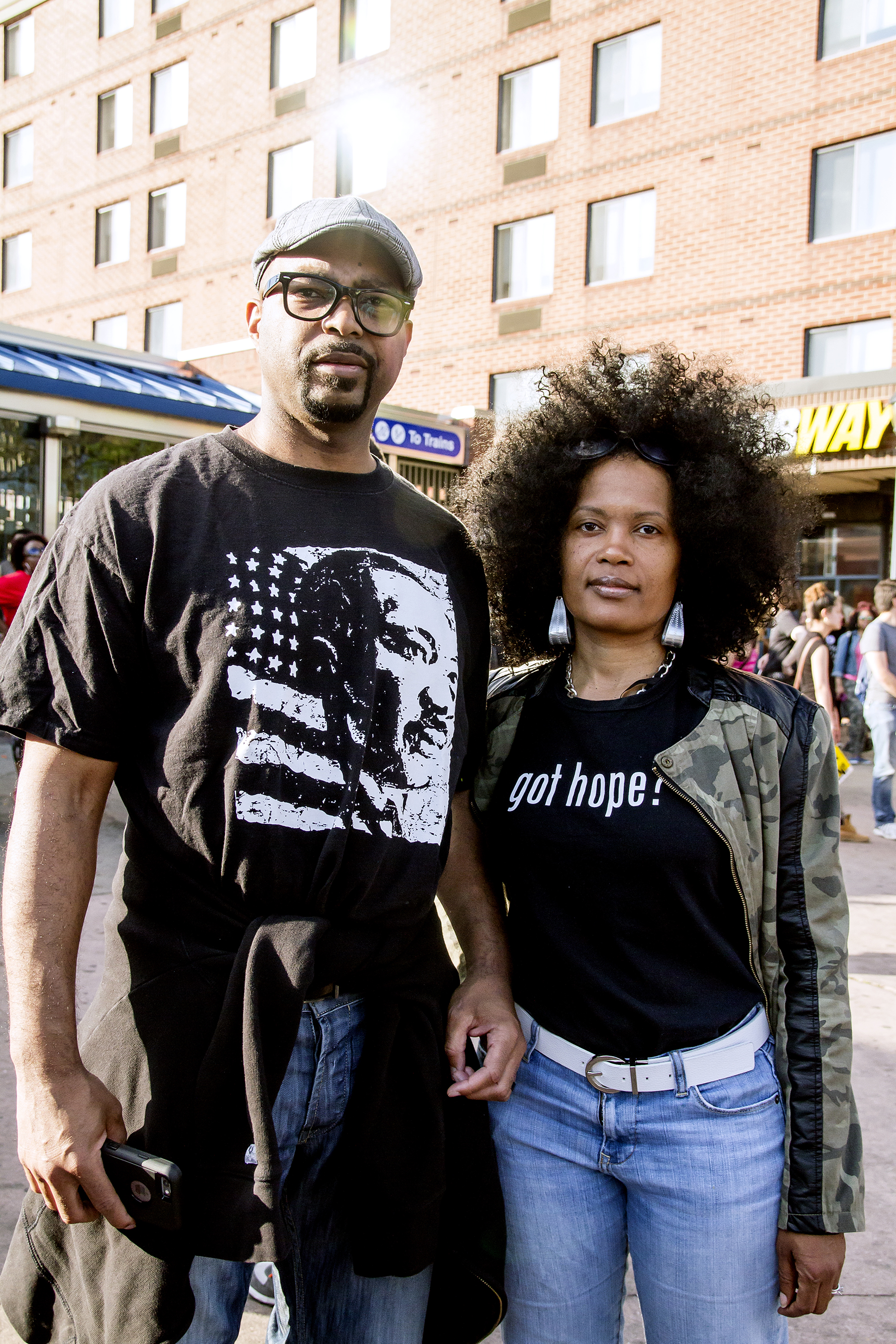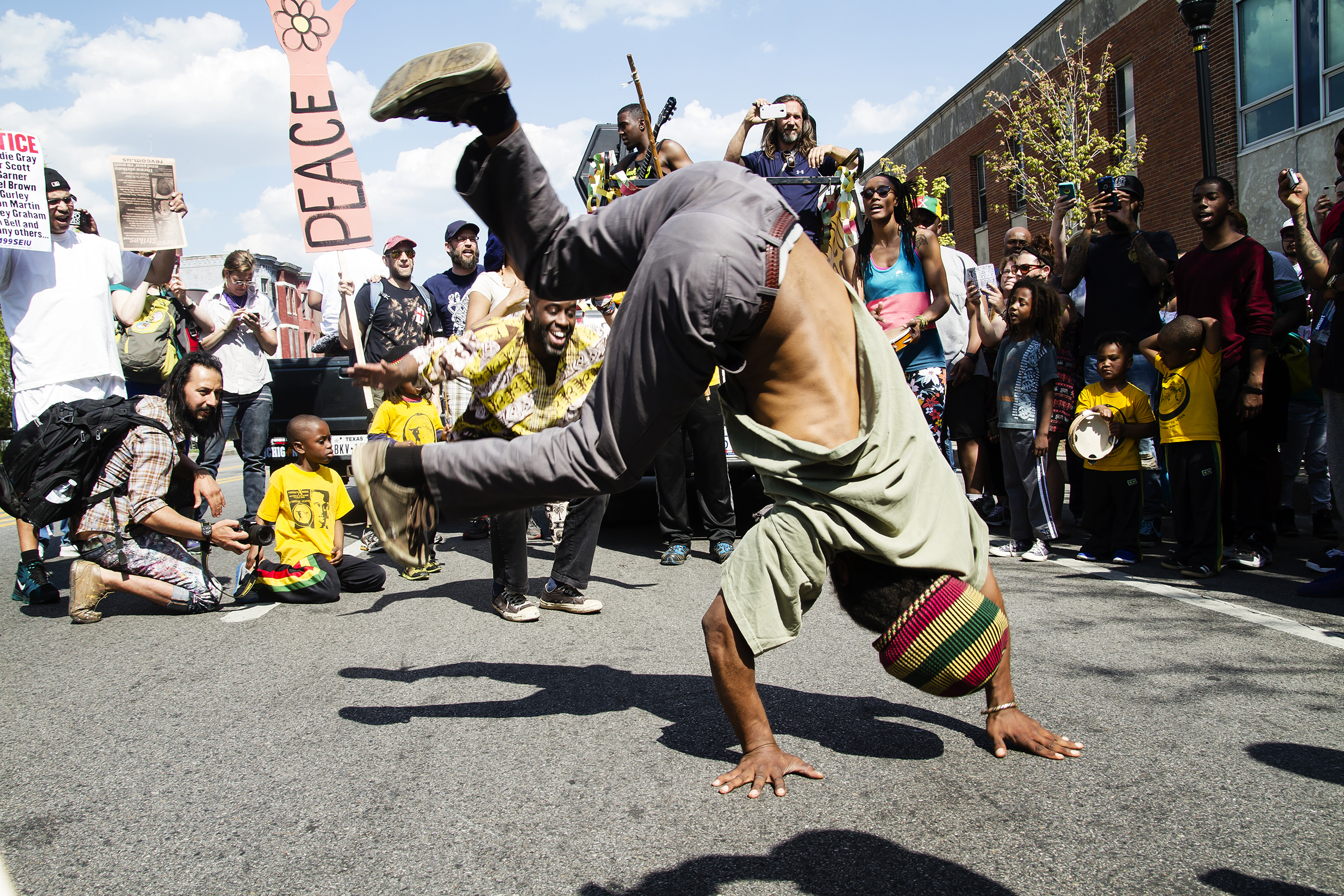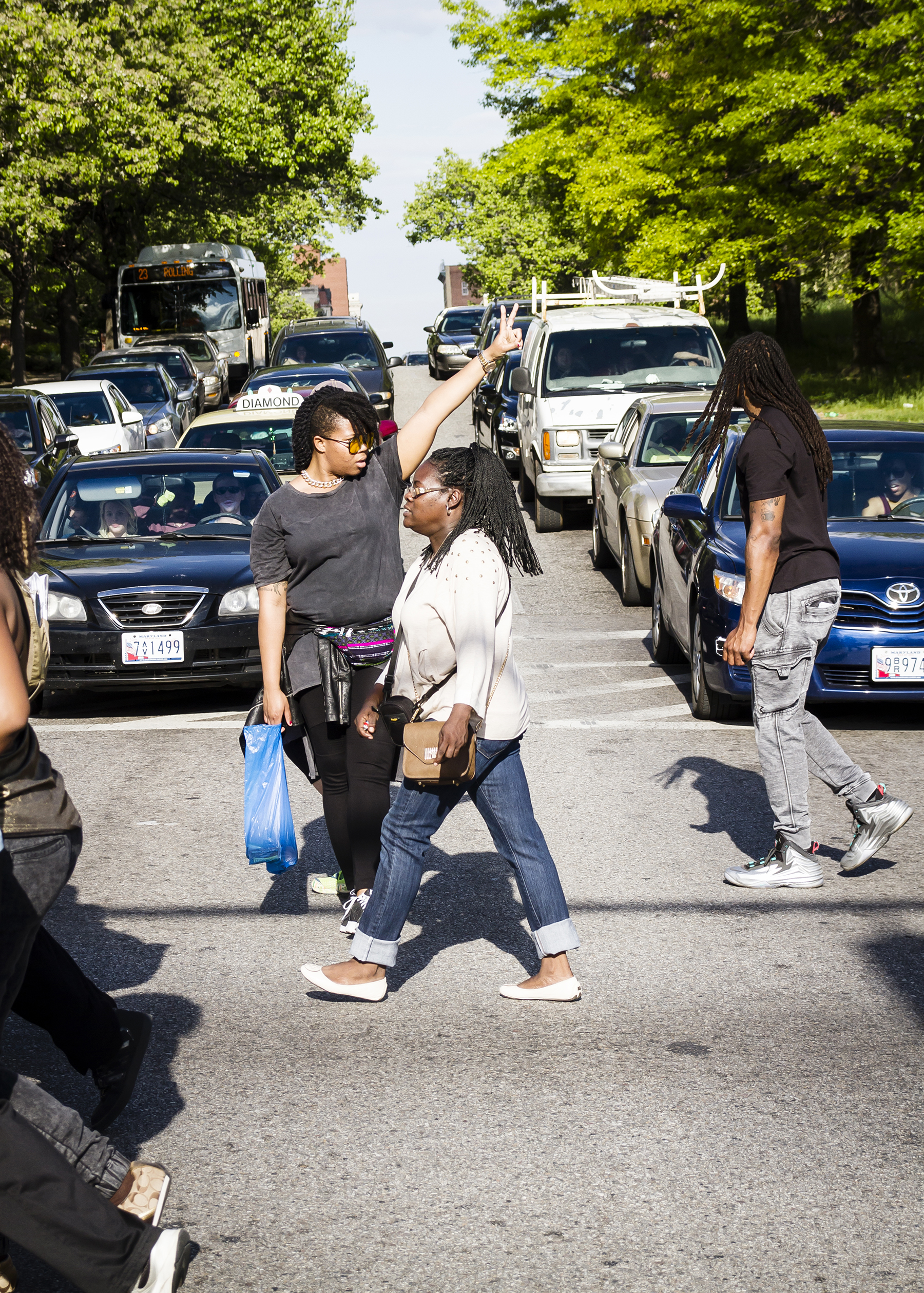About Tiffany
Baltimore City
Tiffany Jones is a visual artist and has received her BFA in photography from the Maryland Institute College of Art. Jones' art practice often employs interactive types of data collection including interviews and surveys, in order to engage participants. Versatile and varied, Jones’ work is always influenced by history, current events, and societal assumptions. This practice grounded her community work as an artist. Her passion for community art and motivation for engagement grew with her… more
Jump to a project:
Our Baltimore
A visual story of the heart of a city.
-
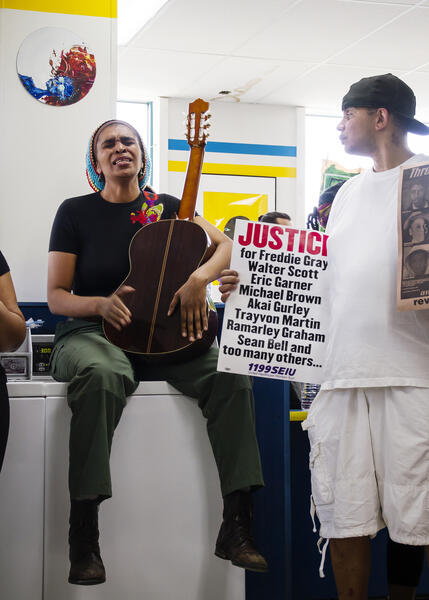 LoveLove on the Line, 2015
LoveLove on the Line, 2015 -
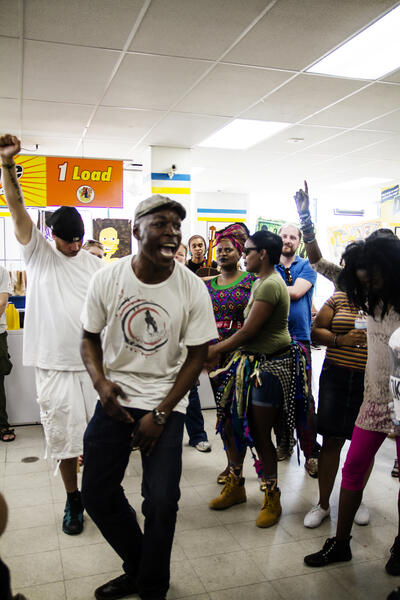 PowerLove on the Line, 2015
PowerLove on the Line, 2015 -
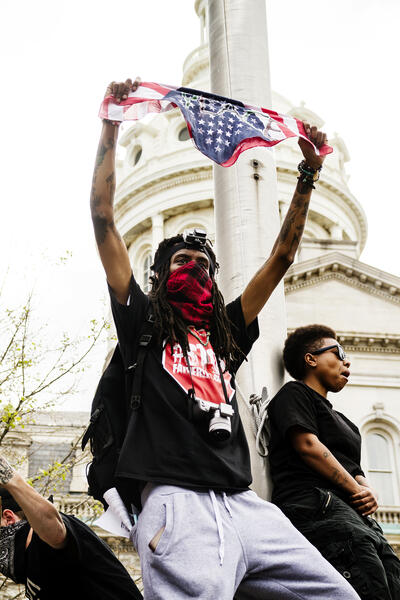 FearlessNational March, 2015
FearlessNational March, 2015 -
 HopeNational March, 2015
HopeNational March, 2015 -
 Our BrothersArtivist March, 2015
Our BrothersArtivist March, 2015 -
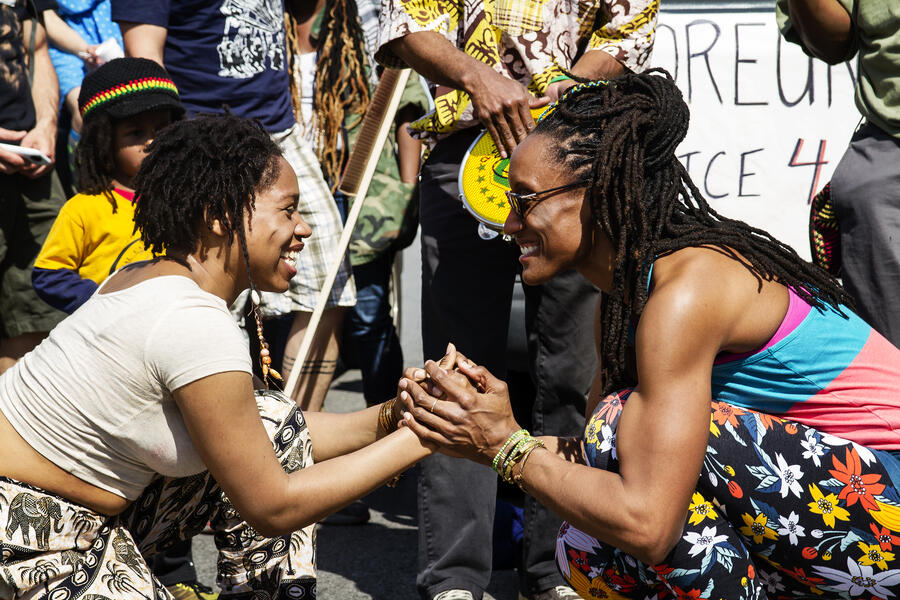 Our SistersArtivist March, 2015
Our SistersArtivist March, 2015 -
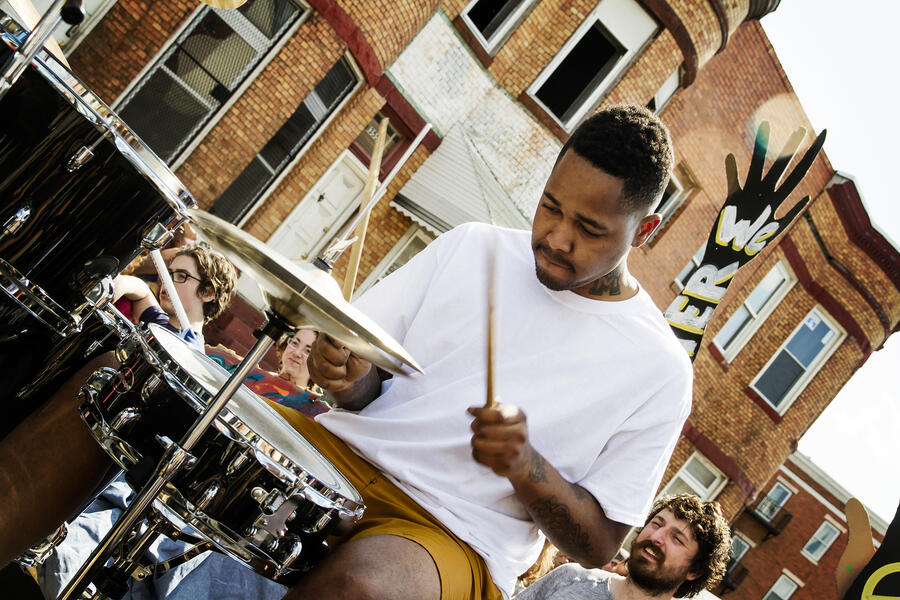 The BeatArtivist March, 2015
The BeatArtivist March, 2015 -
 PeaceNational March, 2015
PeaceNational March, 2015 -
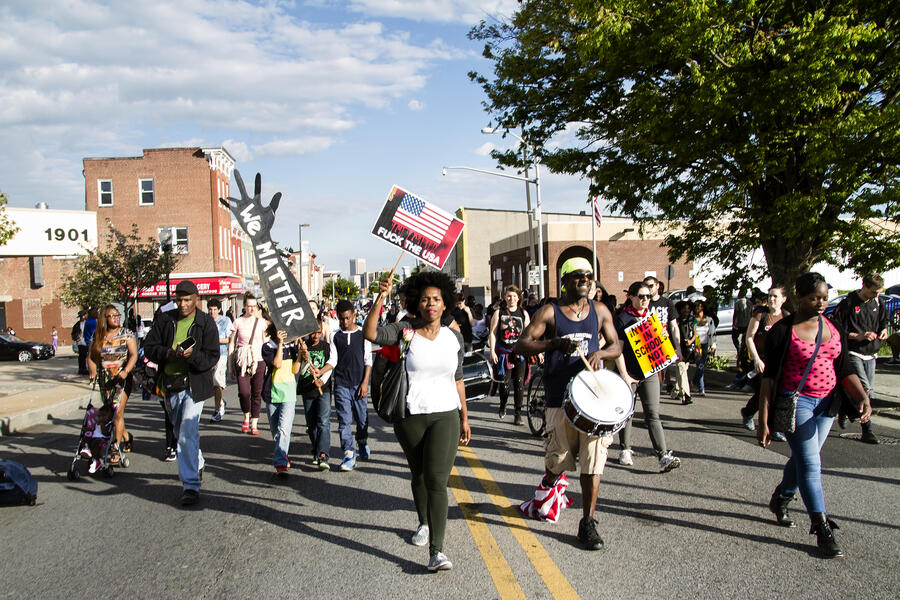 We MatterNational March, 2015
We MatterNational March, 2015 -
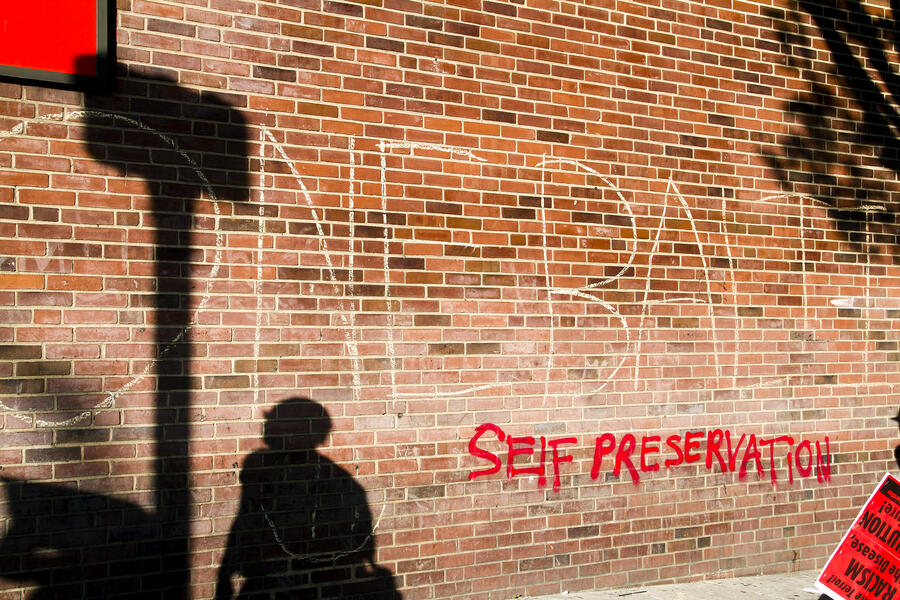 One BaltimoreNational March, 2015
One BaltimoreNational March, 2015
unFaded
The barber shop, a cultural platform of the Black community as early as the 1800’s, was the first privately owned black business. The barber and the barber shop experience nourishes the soul of the unseen man that comes from a population which has been haunted by their outward appearance for centuries. It is in the barber shop where the image of blacks is skillfully composed and the Black identity is crafted. unFaded looks at rites of passage, tradition, and how the barbershop experience has served as a cultural platform for individuals in the Black community.
Thrust into a world of change, Shackled down in fetters,
Given strange new standards, By different pace setters;
Up early, every morning, Before the break of day,
With hair matted down, Like tramped on Hay;
No aids to aid nature, No soap, nor shampoo, No comb, no brush,
What was a chief to do? Lost was his culture,
Taken from his kind, Picked was his brain,
Confused was his mind.
Tall, strong and sturdy, A ring in his nose
The Chief of his tribe, Wearing “corn rows”.
A band on his forehead, A pick in his hair,
The spear by his side, Showing a man of care.
The feeling of rejection, His soul had to face
With the changing of time, And the change of pace.
- Bessie Ann Watkins
FREEDOM BEFORE SLAVERY: PRECEDING 1612
"Rooted Pride"
The African pick, a symbol of culture, heritage, and beauty is carefully designed to help maintain the kink and curl of black hair. It represents the sense of self-worth and dignity blacks were forced to leave behind along with their freedom. As a product of their identity black hair is not a commodity. The barbershop is a Black Space central to the production of black identity.
CIVIL WAR: 1861 – 1865
PROFESSIONALIZATION MOVEMENT: 1880’S - 1890’S
"Color-Lines"
Barbering was viewed as a racialized skill since slaves
learned from their masters. By the end of the nineteenth century, blacks mastered this skill and transformed into master barber businessmen making barbershops one of the first black owned businesses. However, barbershops, such as those in the south, were bound to a new kind of bondage, white clients only.
JIM CROW: 1877 – 1960’S
GREAT MIGRATION: 1910 - 1970
"Migration by a New Generation"
Barbershops began defining their Black Space during the turn of the twentieth century. The industry shifted from a service to whites into a foundation for the beginning of a black cultural movement. The number of black barbershops increased as a new generation considered the organization and safety of black communities.
Thrust into a world of change, Shackled down in fetters,
Given strange new standards, By different pace setters;
Up early, every morning, Before the break of day,
With hair matted down, Like tramped on Hay;
No aids to aid nature, No soap, nor shampoo, No comb, no brush,
What was a chief to do? Lost was his culture,
Taken from his kind, Picked was his brain,
Confused was his mind.
Tall, strong and sturdy, A ring in his nose
The Chief of his tribe, Wearing “corn rows”.
A band on his forehead, A pick in his hair,
The spear by his side, Showing a man of care.
The feeling of rejection, His soul had to face
With the changing of time, And the change of pace.
- Bessie Ann Watkins
FREEDOM BEFORE SLAVERY: PRECEDING 1612
"Rooted Pride"
The African pick, a symbol of culture, heritage, and beauty is carefully designed to help maintain the kink and curl of black hair. It represents the sense of self-worth and dignity blacks were forced to leave behind along with their freedom. As a product of their identity black hair is not a commodity. The barbershop is a Black Space central to the production of black identity.
CIVIL WAR: 1861 – 1865
PROFESSIONALIZATION MOVEMENT: 1880’S - 1890’S
"Color-Lines"
Barbering was viewed as a racialized skill since slaves
learned from their masters. By the end of the nineteenth century, blacks mastered this skill and transformed into master barber businessmen making barbershops one of the first black owned businesses. However, barbershops, such as those in the south, were bound to a new kind of bondage, white clients only.
JIM CROW: 1877 – 1960’S
GREAT MIGRATION: 1910 - 1970
"Migration by a New Generation"
Barbershops began defining their Black Space during the turn of the twentieth century. The industry shifted from a service to whites into a foundation for the beginning of a black cultural movement. The number of black barbershops increased as a new generation considered the organization and safety of black communities.
-
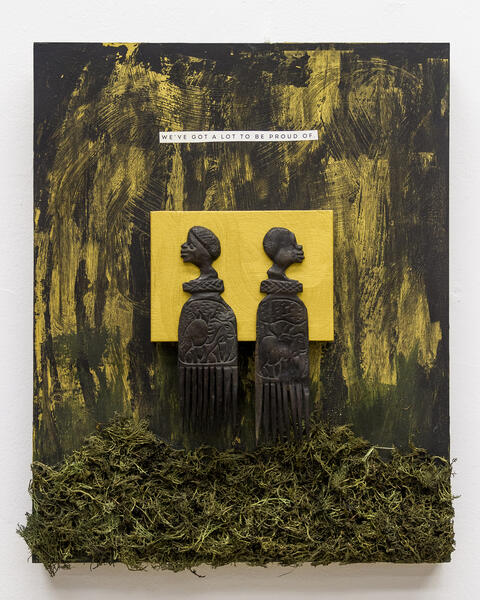 Rooted PrideFREEDOM BEFORE SLAVERY: PRECEDING 1612 "Rooted Pride" The African pick, a symbol of culture, heritage, and beauty is carefully designed to help maintain the kink and curl of black hair. It represents the sense of self-worth and dignity blacks were forced to leave behind along with their freedom. As a product of their identity black hair is not a commodity. The barbershop is a Black Space central to the production of black identity.
Rooted PrideFREEDOM BEFORE SLAVERY: PRECEDING 1612 "Rooted Pride" The African pick, a symbol of culture, heritage, and beauty is carefully designed to help maintain the kink and curl of black hair. It represents the sense of self-worth and dignity blacks were forced to leave behind along with their freedom. As a product of their identity black hair is not a commodity. The barbershop is a Black Space central to the production of black identity. -
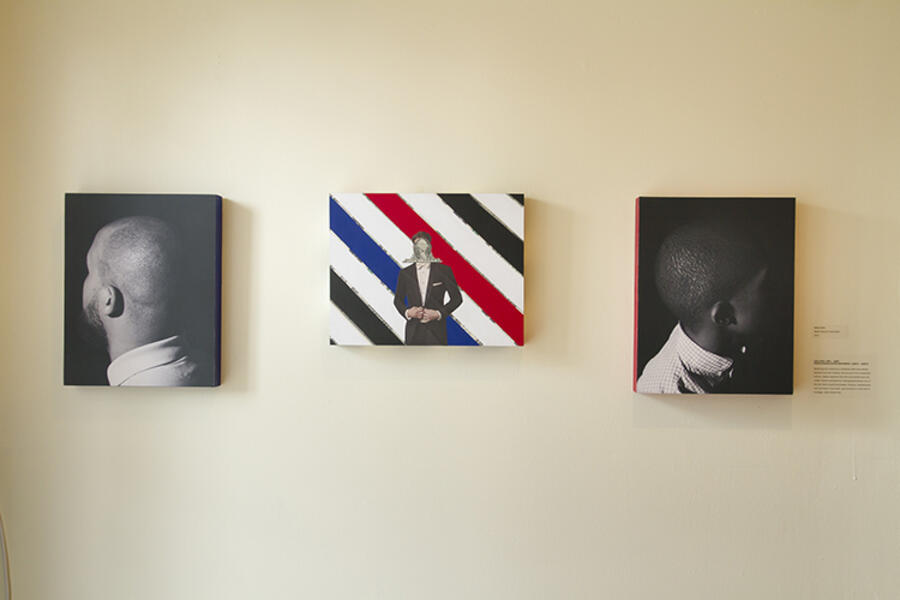 Color-Linestriptych; installation view
Color-Linestriptych; installation view -
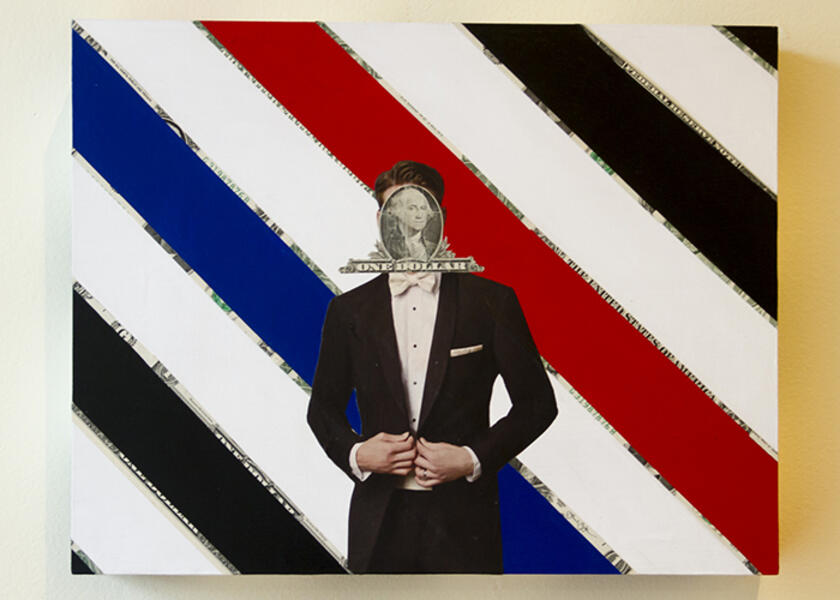 Color-LinesCIVIL WAR: 1861 – 1865 PROFESSIONALIZATION MOVEMENT: 1880’S - 1890’S "Color-Lines" Barbering was viewed as a racialized skill since slaves learned from their masters. By the end of the nineteenth century, blacks mastered this skill and transformed into master barber businessmen making barbershops one of the first black owned businesses. However, barbershops, such as those in the south, were bound to a new kind of bondage, white clients only.
Color-LinesCIVIL WAR: 1861 – 1865 PROFESSIONALIZATION MOVEMENT: 1880’S - 1890’S "Color-Lines" Barbering was viewed as a racialized skill since slaves learned from their masters. By the end of the nineteenth century, blacks mastered this skill and transformed into master barber businessmen making barbershops one of the first black owned businesses. However, barbershops, such as those in the south, were bound to a new kind of bondage, white clients only. -
 Production of MasculinityMixed Media
Production of MasculinityMixed Media -
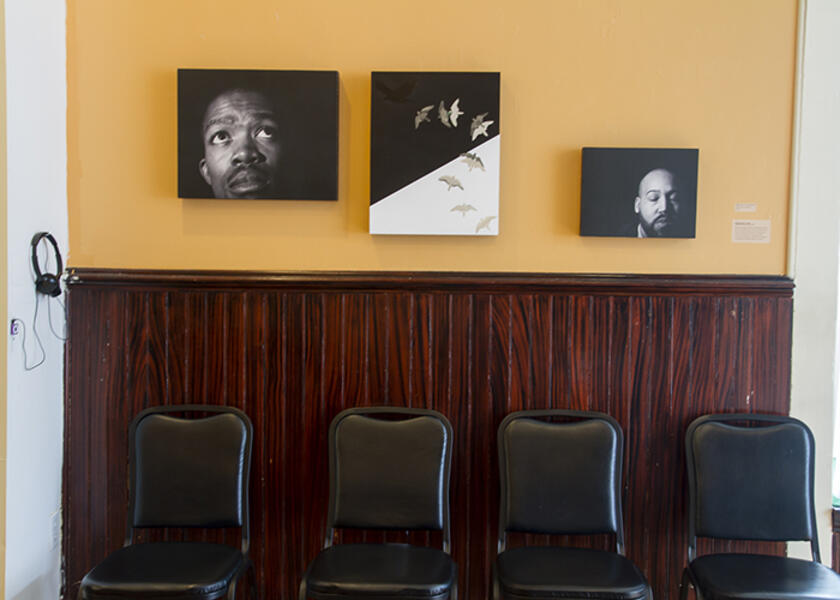 Migration by a New Generationtriptych, installation view
Migration by a New Generationtriptych, installation view -
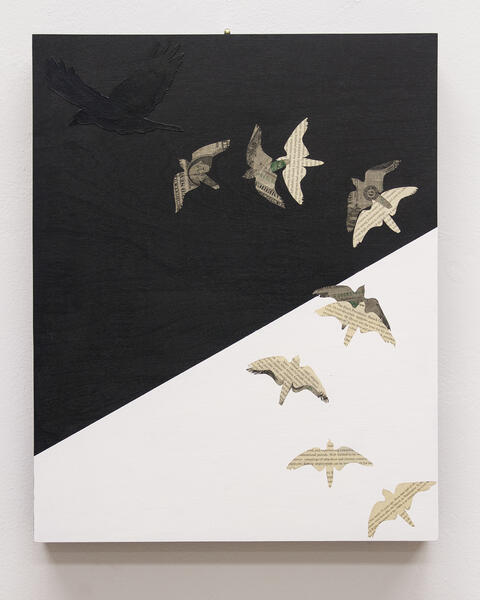 Migration by a New GenerationJIM CROW: 1877 – 1960’S GREAT MIGRATION: 1910 - 1970 "Migration by a New Generation" Barbershops began defining their Black Space during the turn of the twentieth century. The industry shifted from a service to whites into a foundation for the beginning of a black cultural movement. The number of black barbershops increased as a new generation considered the organization and safety of black communities.
Migration by a New GenerationJIM CROW: 1877 – 1960’S GREAT MIGRATION: 1910 - 1970 "Migration by a New Generation" Barbershops began defining their Black Space during the turn of the twentieth century. The industry shifted from a service to whites into a foundation for the beginning of a black cultural movement. The number of black barbershops increased as a new generation considered the organization and safety of black communities. -
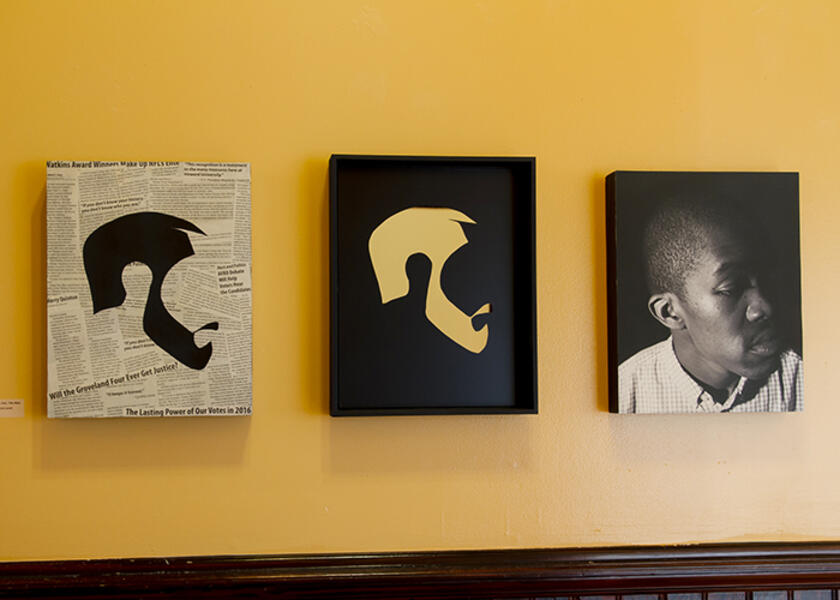 The Cut, The Shape, The Mantriptych, installation view
The Cut, The Shape, The Mantriptych, installation view -
 Tool KitTool Kit contextualizes tools to in the creation of the identity of the black man. Each of the wooden blocks features a black owned Barber Shop starting from the 1940's to now and what their specialty service was for the community they served. Harry's Afro Hut, Est. 1975, Specializing in Free Hypertension Testing & Barber Classes at Westside Skill Center
Tool KitTool Kit contextualizes tools to in the creation of the identity of the black man. Each of the wooden blocks features a black owned Barber Shop starting from the 1940's to now and what their specialty service was for the community they served. Harry's Afro Hut, Est. 1975, Specializing in Free Hypertension Testing & Barber Classes at Westside Skill Center



